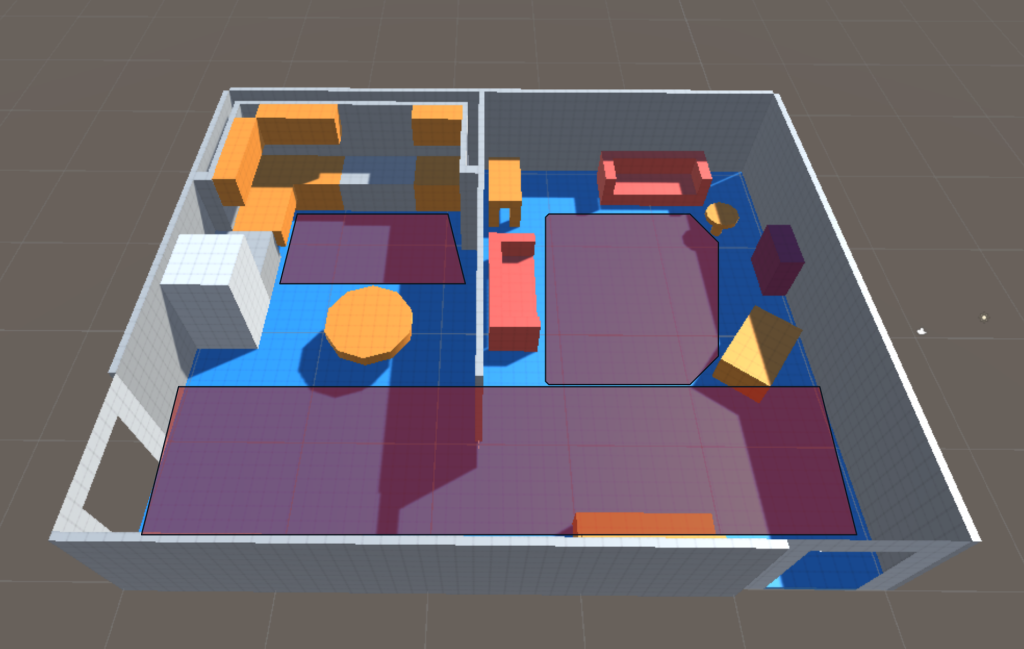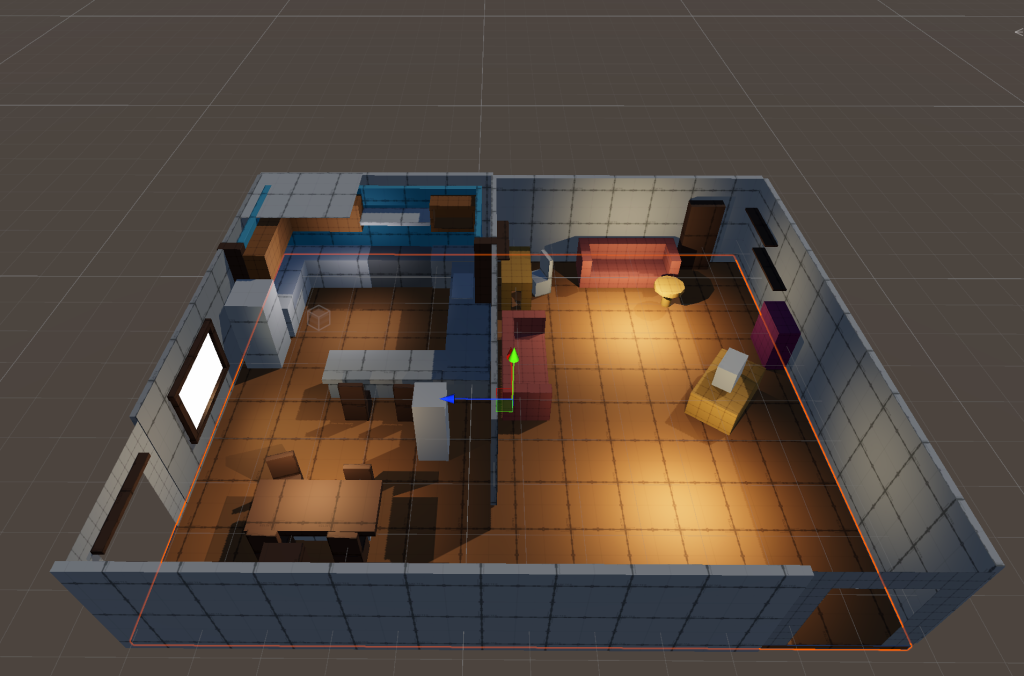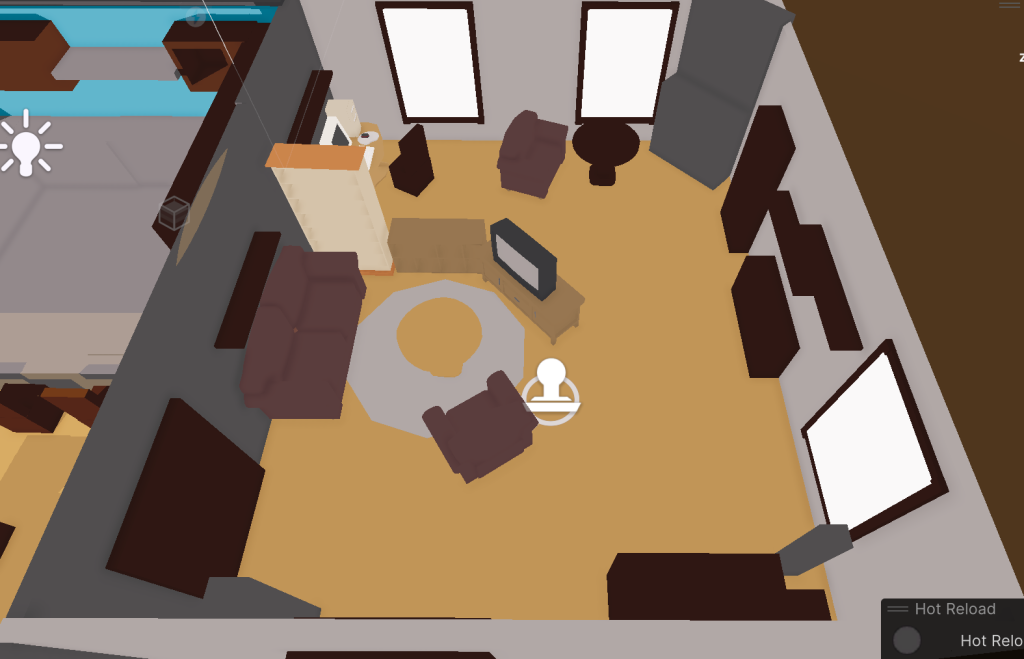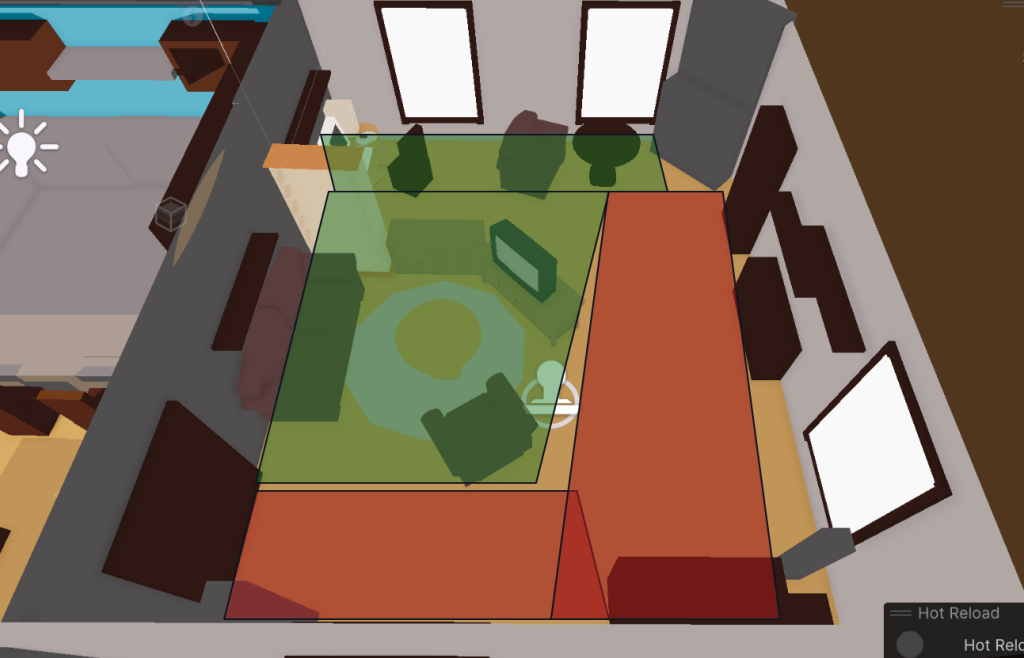The greybox was a bit too big for the furniture inside, but I would fix that while making the whitebox so everything was proportional. A bigger problem was now the enormous stretch of “danger zone” that seemingly had nothing in it, because of the position of the door Hugo fitted during alterations. It meant the TV had to be pushed forwards, as well as the rest of the furniture to cluster around it. None of it really worked together.



The kitchen was a fairly easy fix. Over the course of an afternoon, we worked together to firstly eradicate some of the rectangle dangerzone along the front of the map by moving the dining table along, and changing it from a circle shape to a square. The kitchen was transformed by way of extra countertops, which created another little loop and more places for the rat to run along and hide.
(1) The placement of the doors meant that nothing felt cohesive, and it was difficult to make big loops without leaving a huge dangerzone by the entry door. Eventually, Parker had the idea to make it more “segmented” – an idea which I didn’t hate, but the way everything was clustered now made the safe zones too safe and the danger zones too dangerous. The loop around the sofas and TV was too close knit for proper detection, and the far end of the room had the same problem.
(2) The layout didn’t make any sense from a traditional interior design perspective. The front of the house only has one, small window. The fireplace only has one chair beside it, when usually a fireplace has plenty of furniture so people can cluster round for heat.
(3) Parker and Hugo wanted the house to have a middle-class aesthetic. I completely, STAUNCHLY disagree, for several reasons.
- Esi’s G.D.D. also lists Streatham, Peckham, Brixton, and Croydon as inspiration for the general vibe and aesthetic, which are infamously known for being poorer, rougher areas of London: this people should be working class.
- A working class household would be more relatable for consumers. While researching living room ideas, I came across a niche of Tiktok’s centred around British culture; particularly working class culture and its nostalgia for 2000’s toys and games. Even people with middle-class upbringings will be able to relate somewhat to working class aesthetics, as they are financially similar in comparison to the upper elite of English society. A cosy 2000’s house could have 90’s wallpaper and a 70’s avocado bathroom, and yet still be completely recognisable – something the player might have seen at a Grandma’s or friend’s house, or grown up in themselves.
- Middle-class aesthetics tend to err towards minimalism, sleekness, cleanness, and grey/white colour palettes, which would take away visual clutter for our rat to hide behind. They also tend to be in newer or rennovated houses, whereas most of the British population live in houses that have been standing for a little while, and have aesthetic choices of the past few decades set into it. Middle-class houses would also be less likely to have rats.


Leave a Reply